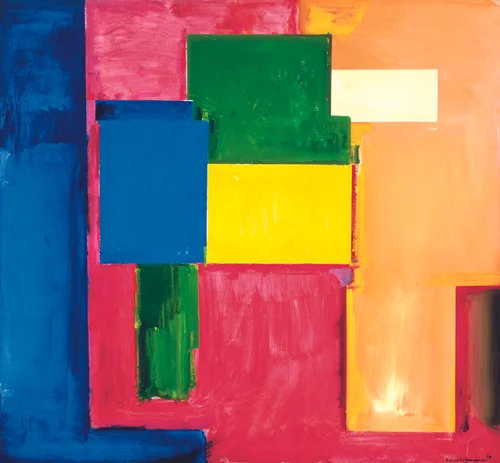Students are, as I have said before, the best thing that ever happened to my art making process.
Case in point: I teach one lovely woman who works in a hospital by day, and is exploring color and expression through oil paint on her off days.
We began with a simple-ish painting of a blooming dogwood in rain, but she quickly expressed a preference for the proto-Abstract Expressionist Hans Hofmann (1880 - 1966) paintings I shared with her. By the next week, she'd bought a book on the subject.
“I told a friend about Hofmann,” she said, “and he said, 'Hold on!' He showed me a painting of colored squares he'd done. But … it was just colored squares on a canvas,” she laughed.
Already she understands that Hans Hofmann's paintings are not just squares of color on a canvas. It's wonderful when a student comes equipped with such sensibility!
We decided to reproduce one of his paintings by following his process. The end goal would be to create on canvas what Hans Hofmann called "push pull," and Josef Albers called "non dominance."
Elaine de Kooning (the better de Kooning painter, in my opinion, and an invaluable annotator of art history as she participated in it) laid out Hofmann's approach in this fascinating article in Art News.
First, a complicated subject is required. I chose chairs around a kitchen table.
Hans Hofmann used a messy studio, and the predictability and familiarity of chairs and dresser legs, to help create a space we recognize in spite of the overlapping lines.
He then blocked out what he wanted to sit back, creating a central subject.
From there, he began to wrestle with light, immediacy, and push pull by creating large rectangular areas in pure color.
As de Kooning notes, “By this time (after three hours’ work), the artist was holding fifteen brushes in his left hand, and his four original colors had each multiplied into as many distinct tones.”
Try it out yourself!



